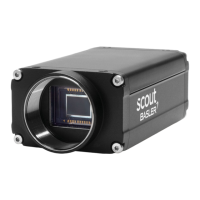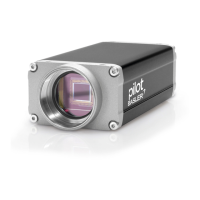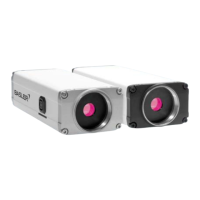Standard Features AW00089317000
284 Basler ace GigE
illustrate setting the X Offset, Y Offset, Width, and Height parameter values. As an example, Auto
Function AOI1 is selected:
// Select the appropriate auto function AOI for gain auto and exposure
auto
// control. Currently auto function AOI 1 is predefined to gather the
pixel
// data needed for gain auto and exposure auto control
// Set the position and size of the auto function AOI
Camera.AutoFunctionAOISelector.SetValue( AutoFunctionAOISelector_AOI1
);
Camera.AutoFunctionAOIOffsetX.SetValue( 0 );
Camera.AutoFunctionAOIOffsetY.SetValue( 0 );
Camera.AutoFunctionAOIWidth.SetValue(
Camera.AutoFunctionAOIWidth.GetMax() );
Camera.AutoFunctionAOIHeight.SetValue(
Camera.AutoFunctionAOIHeight.GetMax() );
You can also use the Basler pylon Viewer application to easily set the parameters.
For more information about the pylon API and the pylon Viewer, see Section 3 on page 45.
10.13.4 Gain Auto
Gain Auto is the "automatic" counterpart to manually setting the Gain Raw parameter. When the
gain auto function is operational, the camera will automatically adjust the Gain Raw parameter
value within set limits until a target average gray value for the pixel data from the related Auto
Function AOI is reached.
The gain auto function can be operated in the "once" and continuous" modes of operation.
If the related Auto Function AOI does not overlap the Image AOI (see the "Auto Function AOI"
section) the pixel data from the Auto Function AOI will not be used to control the gain. Instead, the
current manual setting for the Gain Raw parameter value will control the gain.
The gain auto function and the exposure auto function can be used at the same time. In this case,
however, you must also set the auto function profile feature.
For more information about
setting the gain "manually", see Section 10.1 on page 197.
the auto function profile feature, see Section 10.13.7 on page 290.

